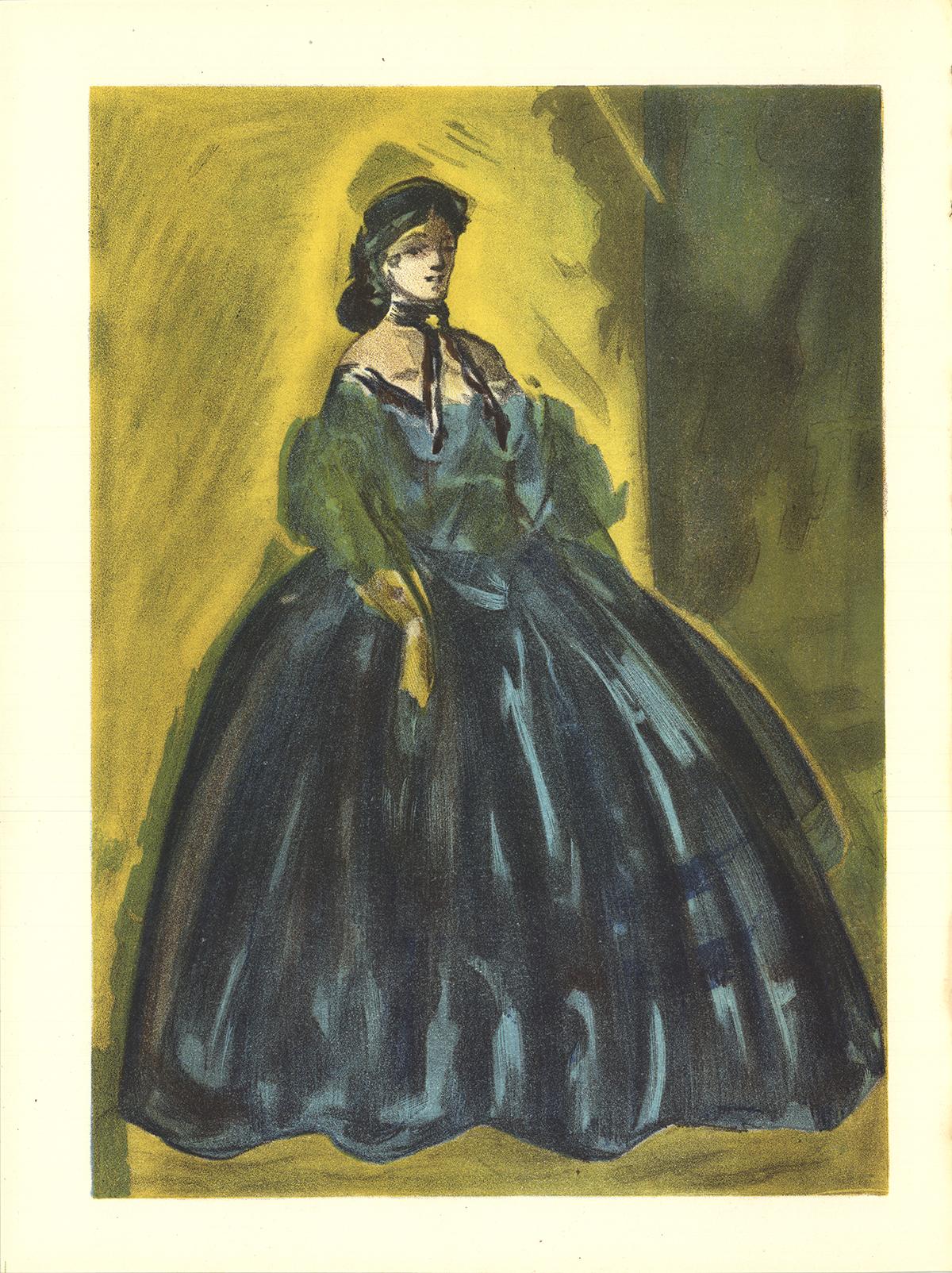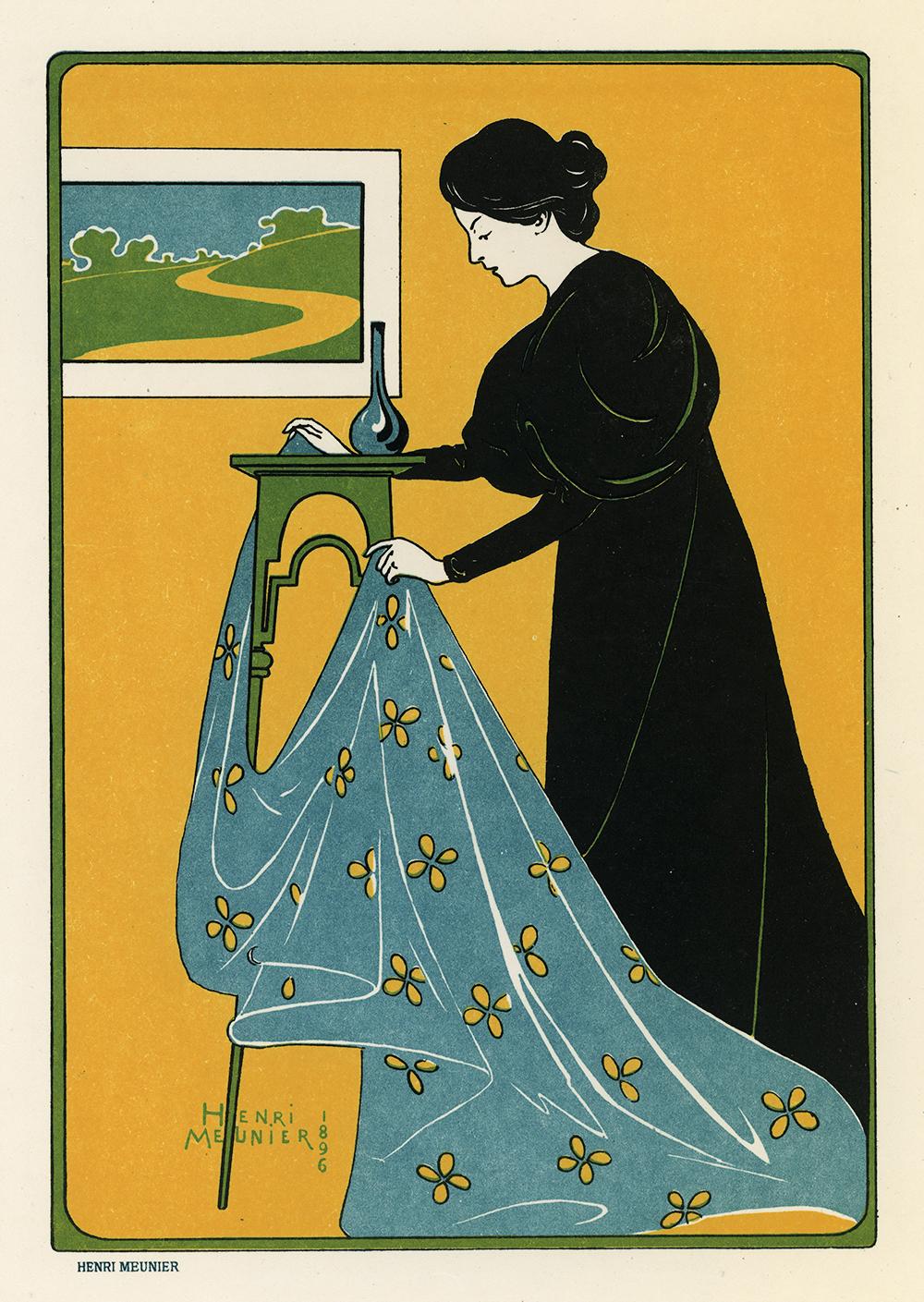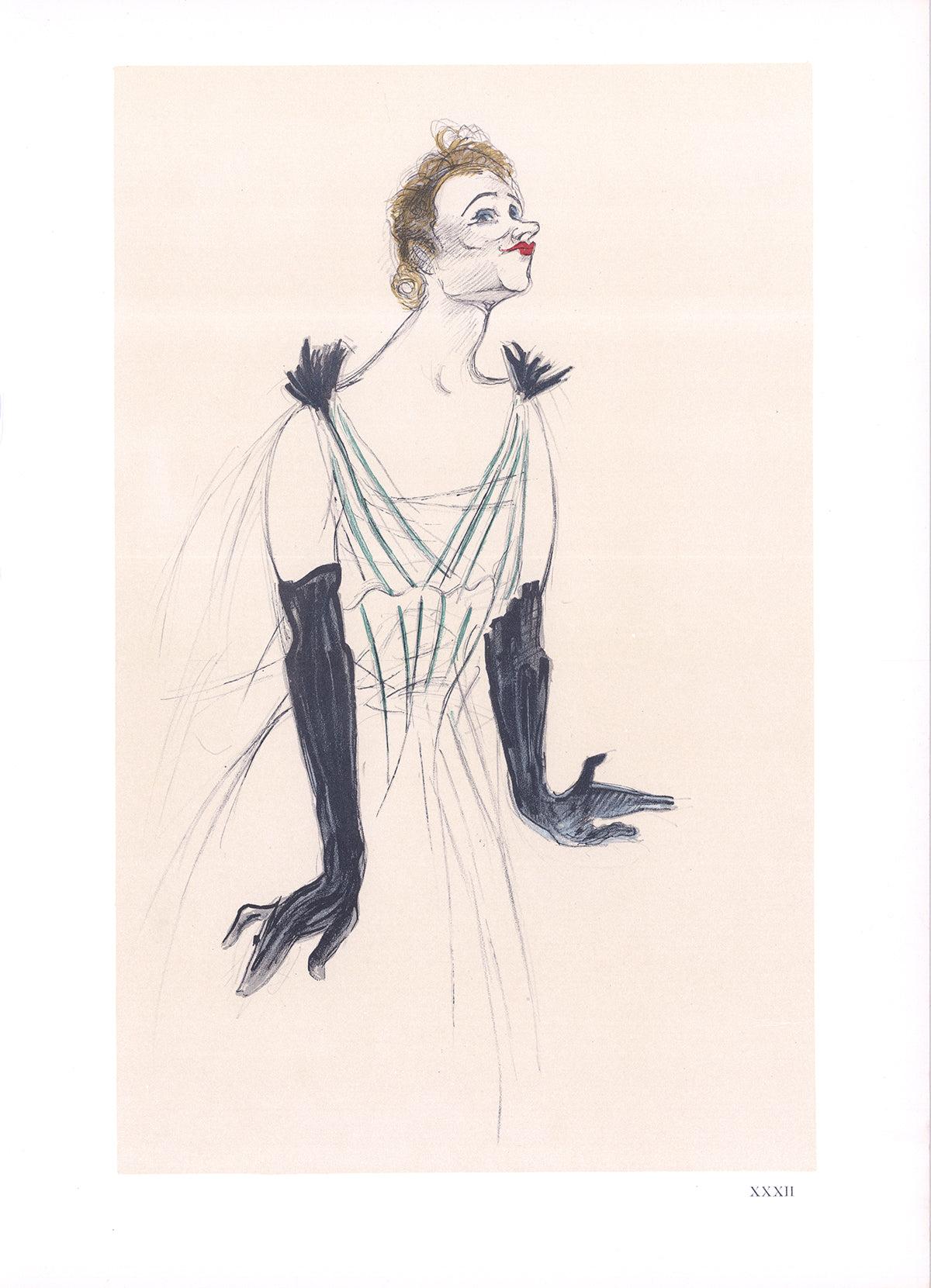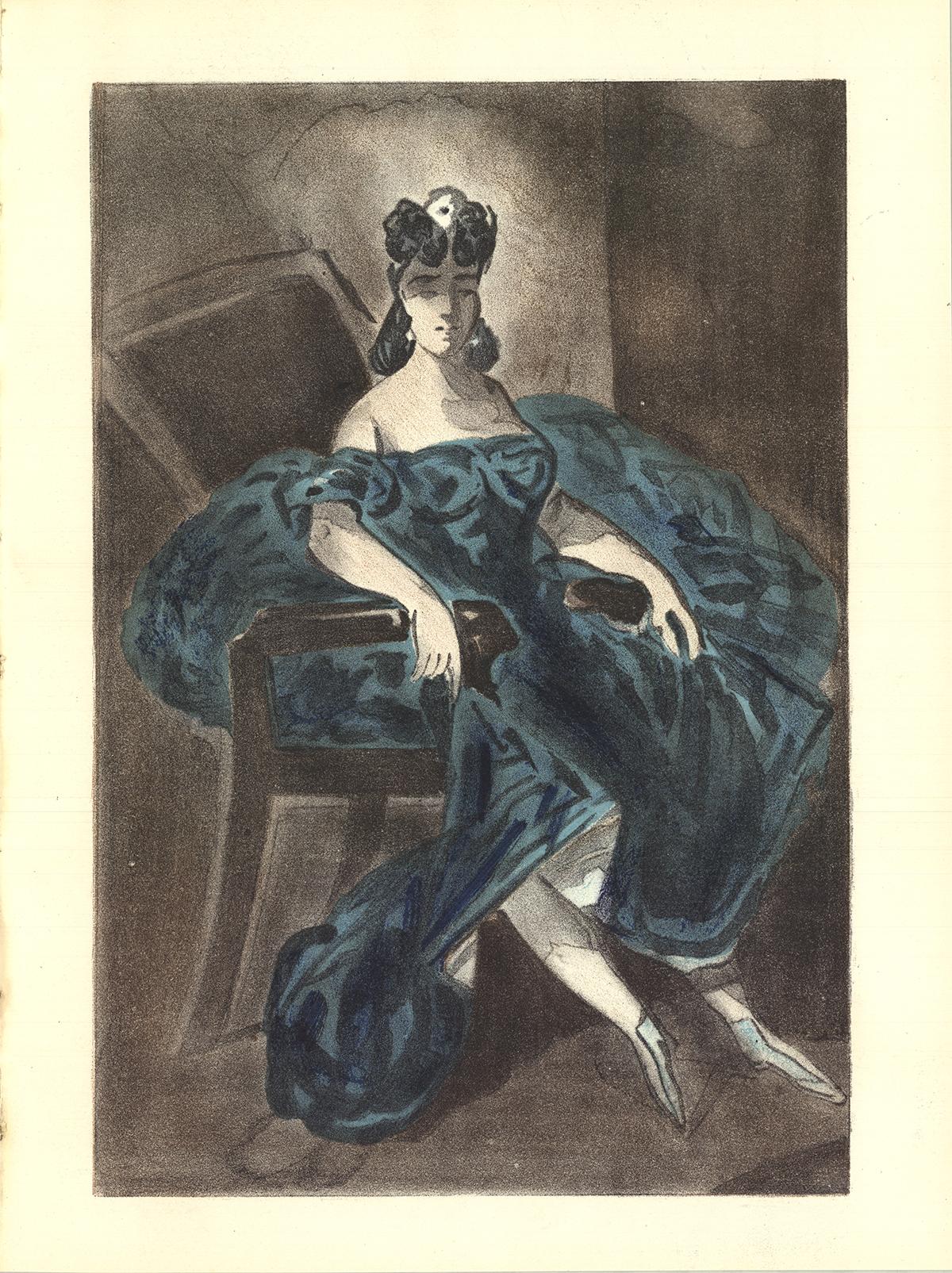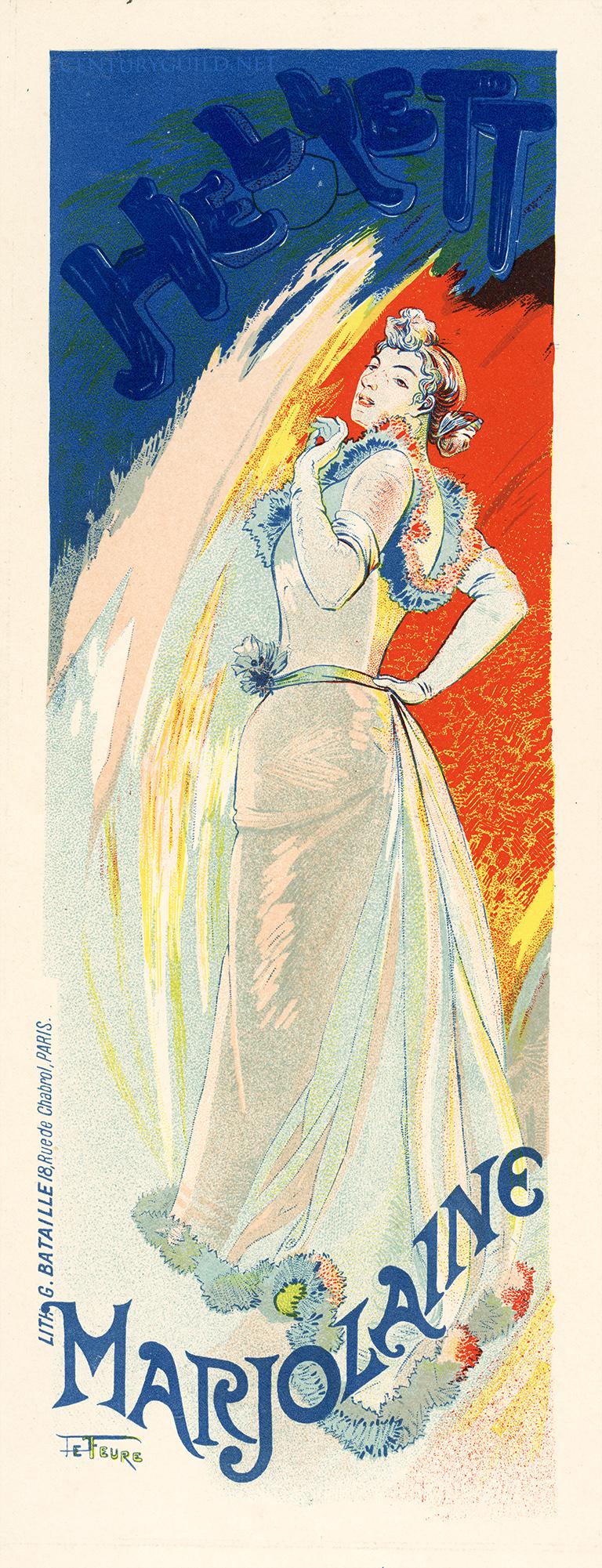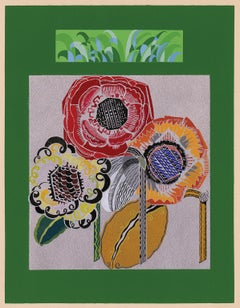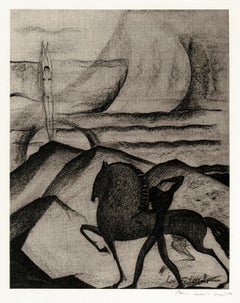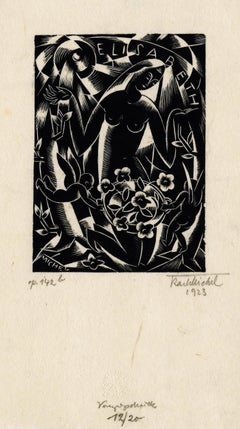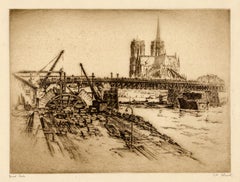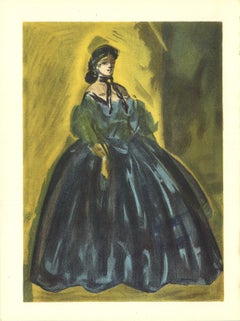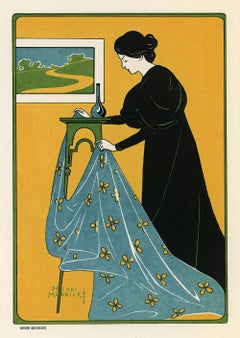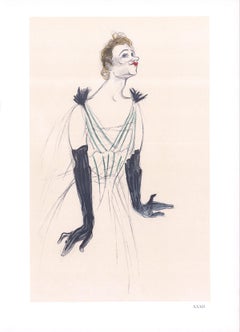Items Similar to 'Yvette Guilbert, SCALA' — Fin de Siècle, Paris
Want more images or videos?
Request additional images or videos from the seller
1 of 3
BAC (Ferdinand Bach)'Yvette Guilbert, SCALA' — Fin de Siècle, Paris1893
1893
$225
£174.42
€197.43
CA$322.02
A$351.40
CHF 182.40
MX$4,204.19
NOK 2,315.20
SEK 2,168.61
DKK 1,474.72
About the Item
BAC (Ferdinand Bach), 'Yvette Guilbert, Tous les Soirs SCALA', vintage color lithograph, 1893. Signed, dated, and titled in the stone.
A superb, richly-inked impression, with fresh colors, on heavy, cream wove paper, the full sheet with margins (3/4 to 3 1/8 inches), in excellent condition. Image size 13 5/8 x 5 1/8 inches (346 x 130 mm); sheet size 15 1/2 x 11 3/8 inches (394 x 289 mm). Archivally sleeved, unmatted.
With the letters 'Imprimerie CHAIX (Atelier J. Chéret) 20, rue Bergere, PARIS. (Encres Ch. LORILLEUX)', in the bottom margin.
Printer: Imprimerie Chaix (Atelier Jules Chéret). Publisher: Les Maitres de l’Affiche, PL.19; with the Maitres de l’Affiche blindstamp in the margin, lower right.
- Creator:BAC (Ferdinand Bach) (1859 - 1952, German)
- Creation Year:1893
- Dimensions:Height: 13.63 in (34.63 cm)Width: 5.13 in (13.04 cm)
- Medium:
- Movement & Style:
- Period:
- Condition:
- Gallery Location:Myrtle Beach, SC
- Reference Number:Seller: 1040541stDibs: LU53239859802
About the Seller
5.0
Recognized Seller
These prestigious sellers are industry leaders and represent the highest echelon for item quality and design.
Platinum Seller
Premium sellers with a 4.7+ rating and 24-hour response times
Established in 1995
1stDibs seller since 2016
328 sales on 1stDibs
Typical response time: 1 hour
Associations
International Fine Print Dealers Association
- ShippingRetrieving quote...Shipping from: Myrtle Beach, SC
- Return Policy
More From This Seller
View All'Poppy' — Art Deco Pochoir from the acclaimed portfolio 'RELAIS'
By Edouard Benedictus
Located in Myrtle Beach, SC
Edouard Benedictus, 'Poppy' from the portfolio 'Relais', plate 14, color pochoir, 1930. Signed in the matrix, in the center bottom margin. A superb, richly-inked impression, with fresh, vibrant colors, including metallic gold and silver inks, on heavy, cream wove paper; the full sheet with margins (1 3/8 inches), in excellent condition. Published by Éditions Vincent, Fréal et Cie, Paris. The pochoir production is by Jean Saudé, the French printmaker known for his mastery of the technique and the author of the first how-to book on the pochoir process. Matted to museum standards, unframed.
Image size 14 3/8 x 11 inches (365 x 279 mm); sheet size 17 1/4 x 13 7/8 inches (438 x 352 mm).
Impressions of this work are held in the following museum collections: Cooper-Hewitt National Design Museum Library (Smithsonian), Metropolitan Museum of Art, Minneapolis Institute of Art, New York Public Library, Toledo Museum of Art, Victoria and Albert Museum (London), Virginia Museum of Fine Arts.
ABOUT THIS WORK
The Pochoir process is a refined stencil-based technique employed to create multiples or to add color to prints produced in other mediums. Characterized by its crisp lines and rich color, the print-making process was most popular from the late 19th century through the 1930s, with its center of activity in Paris. The pochoir process began with the analysis of an image’s composition, including color tones and densities. The numerous stencils (made of aluminum, copper, or zinc) necessary to create a complete image were then designed and hand-cut by the 'découpeur.' The 'coloristes' applied watercolor or gouache pigments through the stencils, skillfully employing a variety of different brushes and methods of paint application to achieve the desired depth of color and textural and tonal nuance. The pochoir process, by virtue of its handcrafted methodology, resulted in the finished work producing the effect of an original painting, and in fact, each print was unique.
ABOUT THE ARTIST
Edouard Benedictus (1878 -1930), artist, designer, composer, and chemist, was born and died in Paris. A highly-regarded designer and art critic of the Art Nouveau era, Benedictus gained renown as a colorist and creator of Art Deco-inspired geometric and floral motifs. His work had a significant influence on international fashions in clothing, home furnishings, graphic design, and decorative objects of the period, earning him commissions from leading European design firms. In 1925 he was invited to represent Art Deco textile design...
Category
1930s Art Nouveau Figurative Prints
Materials
Stencil
Rendez-Vous — Early 20th-Century Modernism
By Boris Lovet-Lorski
Located in Myrtle Beach, SC
Boris Lovet-Lorski, Untitled (Rendez-Vous), lithograph, edition 250, 1929. Signed in pencil. Signed in the stone, lower right. From a suite of 10 lithographs published by the artist ...
Category
1920s American Modern Nude Prints
Materials
Lithograph
'Elisabeth' — German Expressionism
By Karl Michel
Located in Myrtle Beach, SC
Karl Michel, 'Elisabeth', woodcut, edition 20, 1923. Signed, dated, and numbered 'op.142b' and '12/20' in pencil. Signed in the block, lower left. Annotated 'Vorgesdruck' [artist’s proof] in pencil.
A fine impression, on heavy fibrous Japan paper, with full margins (1 3/16 to 3 1/2 inches),
in good condition. Printed by the artist, With the artist’s blindstamp in the bottom center margin. Scarce. Matted to museum standards, unframed.
Image size 4 15/16 x 6 inches (131 x 152 mm); sheet size 10 x 6 inches (254 x 152 mm).
ABOUT THE ARTIST
Karl Michel (1889-1984) was a noted graphic designer and expressionist printmaker during Germany's pre-Nazi Weimar Republic (1919-1933). Michel’s work was the subject of a feature article in the influential German graphic design magazine Das Plakat (The Poster) in 1920. An anti-war advocate, Michel created a suite of 12 wood engravings depicting his impressions of the humanitarian toll of WWII entitled ‘Humanitas’ (Humanity). The German publishing house Greifenverlag published the series in a reduced folio of unsigned prints.
Michel’s graphic work is held in the permanent collections of the Auckland War Memorial Museum (New Zealand), Frederikshavn Kunstmuseum & Exlibrissamling (Denmark), Museum of Applied Arts (Budapest), The Robert Gore Rifkind Center for German Expressionist Studies at the Los Angeles County Museum of Art, and the German Expressionism...
Category
1920s Expressionist Figurative Prints
Materials
Woodcut
'L' Abside de Notre Dame' — Vintage 1920s Paris, Realism
By Anton Schutz
Located in Myrtle Beach, SC
Anton Schutz, 'L' Abside de Notre Dame' (The Apse of Notre Dame), etching, 1st state, c. 1927. Signed, titled, and annotated 'First State', in pencil. A supe...
Category
1920s Realist Figurative Prints
Materials
Etching
'Le Paradis Terrestre' (Paradise on Earth) — French Symbolism
By Edouard Goerg
Located in Myrtle Beach, SC
Edouard Goerg, 'Le Paradis Terrestre' (Paradise on Earth), etching, 1931, edition 40. Signed, titled, and numbered '3/40' in pencil. A fine richly-inked impression, on heavy, cream w...
Category
1930s Symbolist Figurative Prints
Materials
Etching
'Ex Libris Dr. Witropp' — German Expressionism
By Karl Michel
Located in Myrtle Beach, SC
Karl Michel, 'Ex Libris Dr. Witropp - Homunculus und Galatee', etching, 1923, edition not stated. Signed, dated, and numbered 'Op. 140' (the artist's inventory number) in pencil. Si...
Category
1920s Expressionist Figurative Prints
Materials
Etching
You May Also Like
Imperia (Caprices of Verlaine) - Original Lithograph 1899
Located in Paris, IDF
Alfred Pierre AGACHE (1843-1915)
Imperia (Caprices of Verlaine), 1899
Original lithograph (Champenois workshop)
Printed signature in the plate
On vellum, 40 x 31 cm (c. 16 x 12 in)
...
Category
1890s Art Nouveau Figurative Prints
Materials
Lithograph
Lena Leclercq-Les Femmes dans l'atelier II
By Lena Leclercq
Located in Brooklyn, NY
Lithograph from Verve Vol. II Magazine No. 5/6.
Shipping and Handling: We offer worldwide shipping. For safe delivery, we use heavy, thick-walled UPS and FedEx. All items are careful...
Category
20th Century Art Nouveau Prints and Multiples
Materials
Lithograph
$200 Sale Price
20% Off
Gonthier-Meymans by Henri Meunier, Art Nouveau Japon lithograph, 1897
By Henri Meunier
Located in Chicago, IL
Henri Meunier’s Gonthier-Meymans lithographic poster, published by Verlag von Gerhard Kühtmann in Dresden, 1897. While this poster was printed in multiple sizes and formats, this edi...
Category
1890s Art Nouveau Prints and Multiples
Materials
Lithograph
Portrait d'Yvette Guilbert
By (After) Henri Toulouse Lautrec
Located in Brooklyn, NY
Portrait of Yvette Guilbert is a refined 1954 lithograph after Henri de Toulouse-Lautrec, printed by the legendary Mourlot Frères in Paris. This elega...
Category
1960s Art Nouveau Portrait Prints
Materials
Lithograph
Lena Leclercq-Les Femmes dans l'atelier
By Lena Leclercq
Located in Brooklyn, NY
Les Femmes dans l'Atelier de Couture by Lena Leclercq shows a seated woman in an exquisite dress that reveals her shoulders and arms, cascading elegantly to her feet. She wears a hea...
Category
20th Century Art Nouveau Prints and Multiples
Materials
Lithograph
$200 Sale Price
20% Off
Hélyett Marjolaine by Georges de Feure, Art Nouveau theater lithograph, 1896
By Georges De Feure
Located in Chicago, IL
Lithograph of George de Feure’s 1896 theatrical Art Nouveau poster promoting Mistinguett’s role as Hélyett in Marjolaine.
Hélyett is shown in a delicate pastel palette, enveloped b...
Category
1890s Art Nouveau Prints and Multiples
Materials
Lithograph
